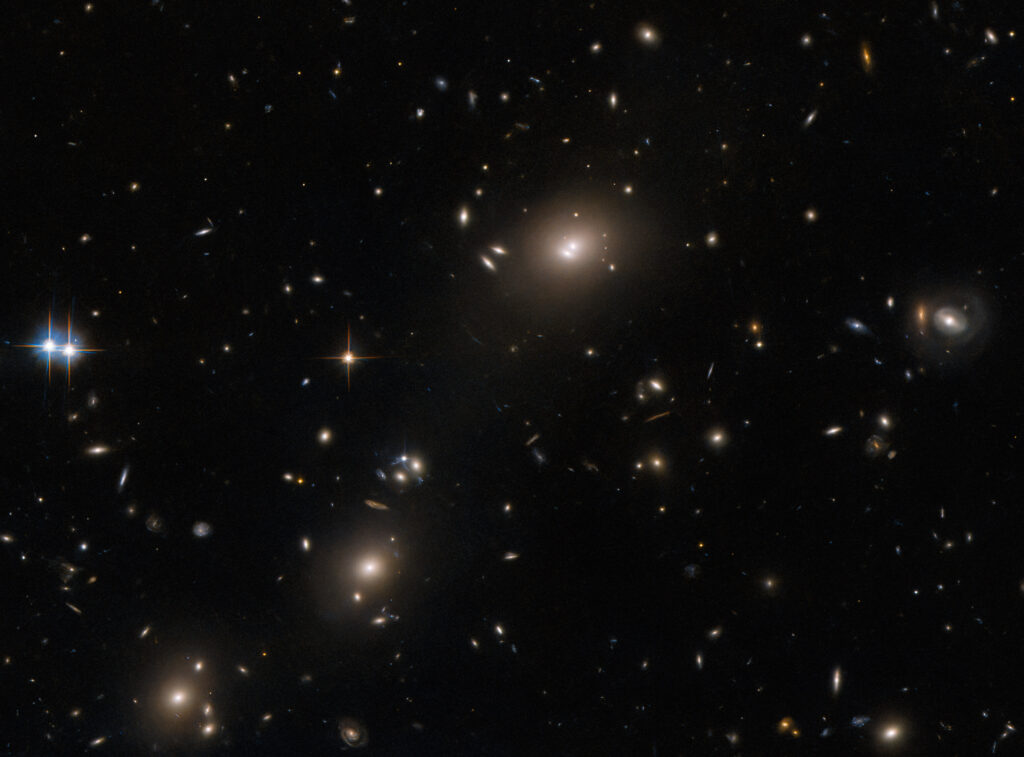
A menagerie of interesting astronomical finds fill this image from the NASA/ESA Hubble Space Telescope. As well as several large elliptical galaxies, a ring-shaped galaxy is lurking on the right of this image. A pair of bright stars are also visible at the left of this image, notable for their colourful criss-crossing diffraction spikes. This collection of astronomical curiosities is the galaxy cluster ACO S520 in the constellation Pictor, which was captured by Hubble’s Advanced Camera for Surveys. This is one of a series of Hubble observations searching for massive, luminous galaxy clusters that had not been captured by earlier surveys. Appropriately, the proposal for observing time was named “They almost got away”! Astronomers took advantage of occasional gaps in Hubble’s busy schedule to capture images of these barely-explored galaxy clusters, revealing a wealth of interesting targets for further study with Hubble and the NASA/ESA/CSA James Webb Space Telescope. Galaxy clusters are among the largest known objects in the Universe, and studying these objects can provide insights into the distribution of dark matter, which is responsible for most of the mass of a galaxy cluster. The vast masses of galaxy clusters is what causes many of them to act as gravitational lenses which distort and magnify light from even more distant objects. This can allow astronomers to use galaxy clusters as a kind of natural gravitational telescope to reveal distant objects that would usually be too faint to resolve — even for the crystal-clear vision of Hubble. [Image description: A collection of oval-shaped, elliptical galaxies. The largest has two neighbouring bright spots in the core. It and two others look like galaxy clusters, with surrounding smaller galaxies. On the left edge of the image are two bright stars with four long spikes, and on the right edge is a small ring-shaped galaxy. Smaller stars and galaxies are spread evenly across the dark background.]
Continue reading →